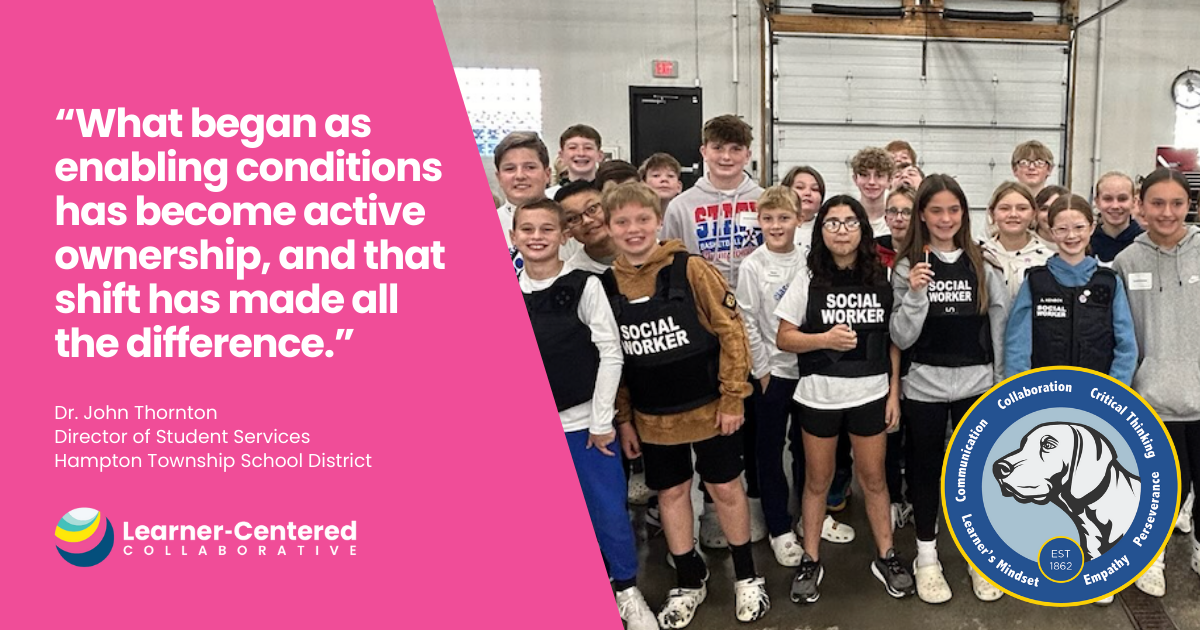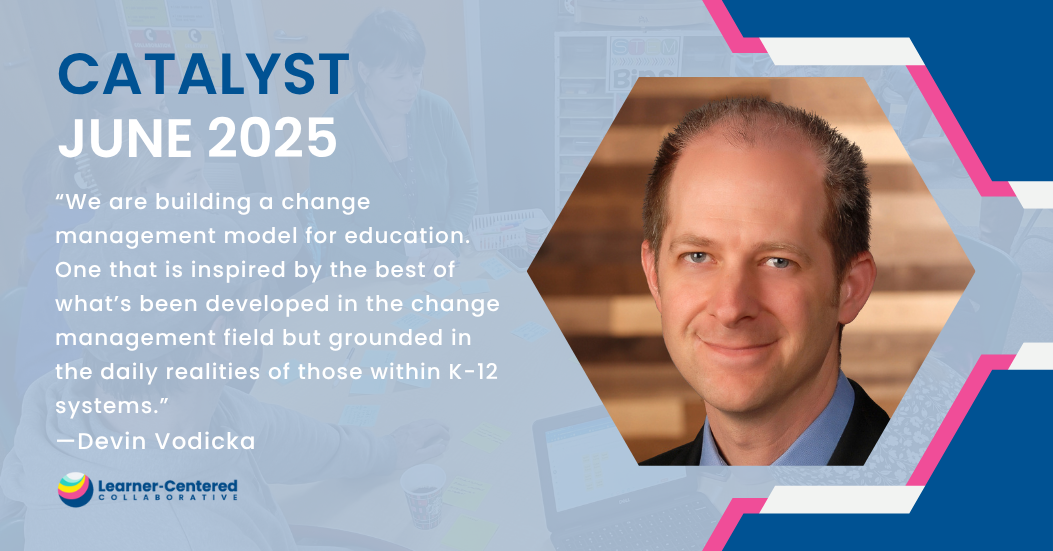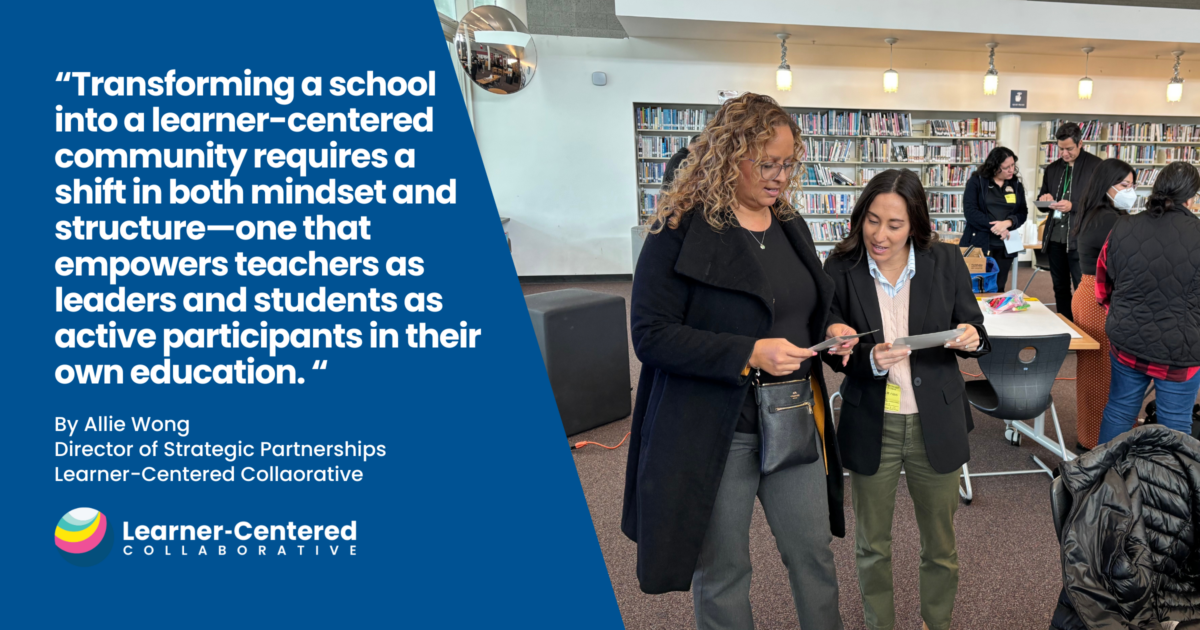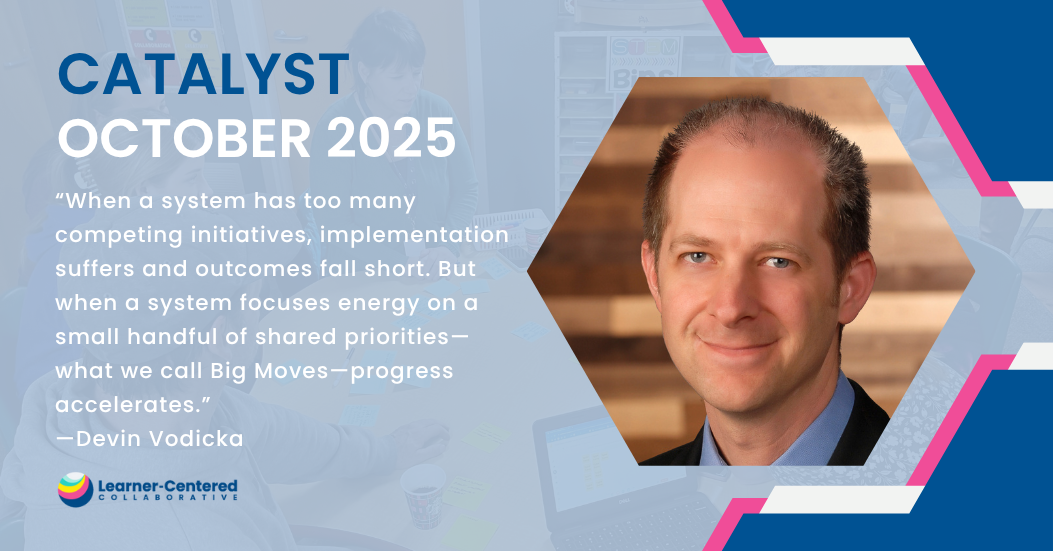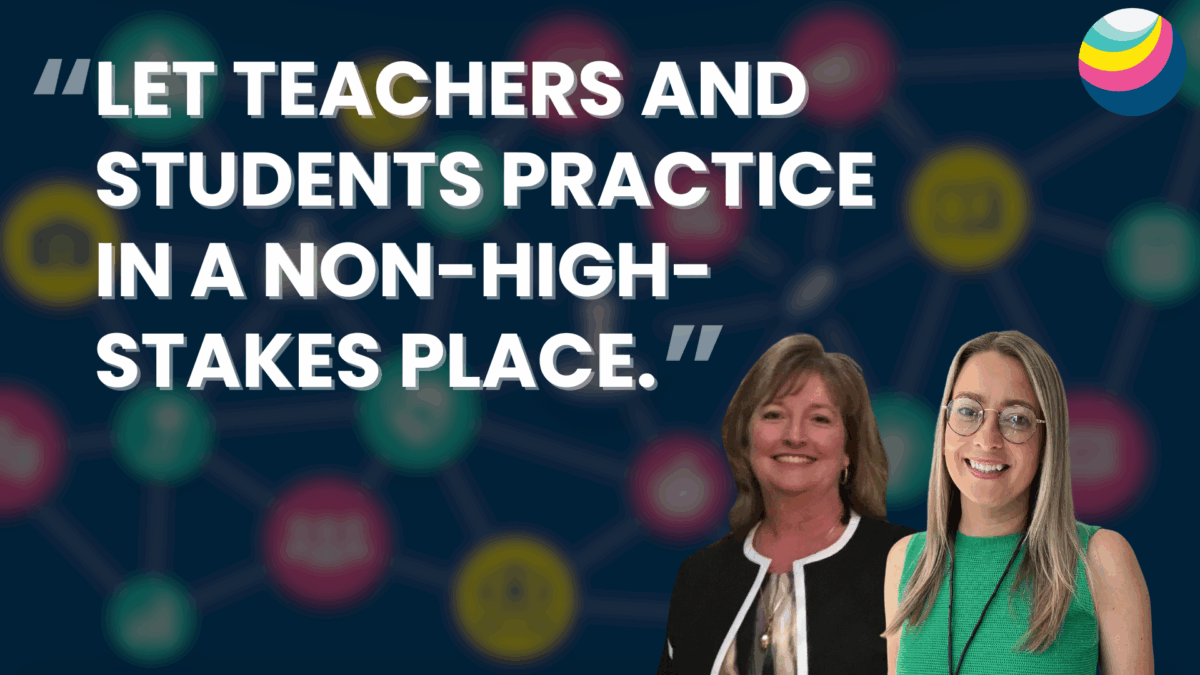Can Design Thinking Make a Large School District More Agile? We Think So!
Co-authored by Katie Weisberg, Liz Perry, and Jesse Ross, Directors, Strategic Partnerships at Learner-Centered Collaborative who lead the work with Colorado Springs District 11

In large, comprehensive school districts, change often moves at a snail’s pace. While start-ups are known for being nimble, agile, and adaptable, school districts can feel bureaucratic, clunky, and mired in cultures of compliance. Yet, these big systems are filled with people who have huge dreams for their students and hold brilliant ideas and creative solutions to pressing problems. The question is: how can a large system amplify the imaginations of its people? How can big systems reorganize the way they work to mirror the energy and bias-to-action of a start-up? In partnership with D11 School District in Colorado Springs, we aim to find out.
The Vision
Over the long term, Colorado Springs District 11 (D11) aspires to create a thriving Design Lab that will become a hub for creative problem-solving in the district and surrounding community. D11 aspires for the Design Lab to operationalize shared design principles and processes to cultivate, iterate, and test ideas and promising solutions. By doing so, D11 aims to drive more effective learner-centered change and innovation than is typically possible in a large school district.
Getting Started
To begin, in partnership with Learner-Centered Collaborative (LCC), D11 created a simple theory of action adopted from Kotter’s Dual Operating System (See Figure 1 below). This approach acknowledges the need for traditional hierarchical structures (think: the traditional org chart) to operate in parallel with smaller, more agile, non-hierarchical and cross-functional teams, which Kotter calls “the network.”
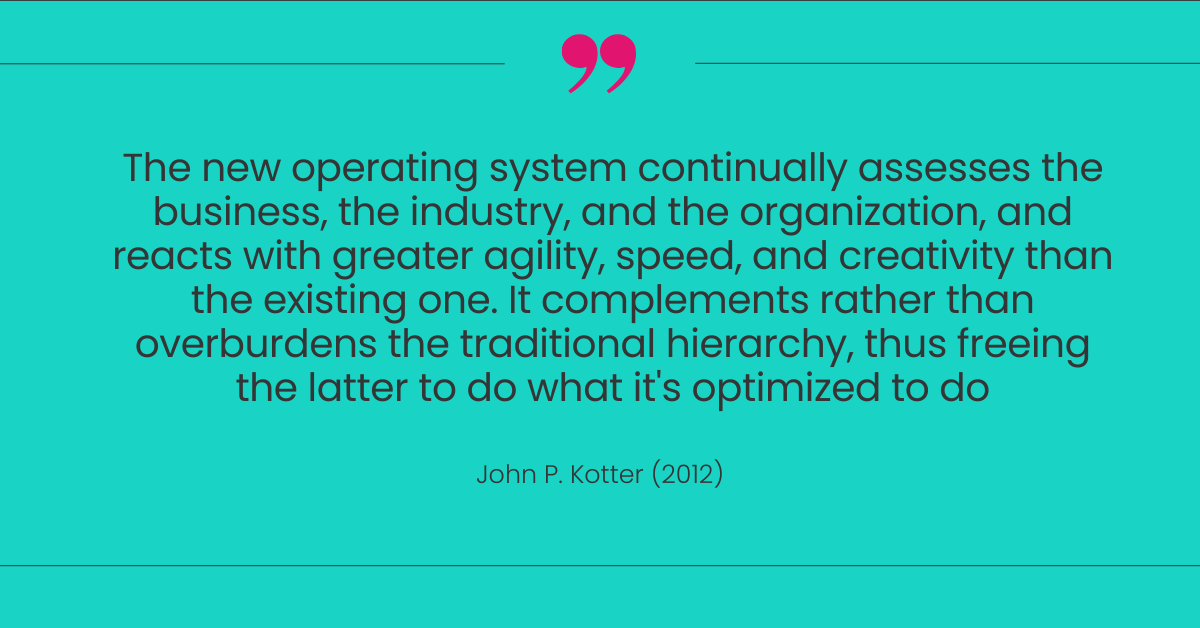
The network (pictured on the right of Figure 1) focuses on generating and testing creative solutions to pressing challenges. It “liberates information from silos and hierarchical layers and enables it to flow with greater freedom and accelerated speed” (Kotter, 2014b). Ideally, teams within the network consist of people with strong interest and diverse expertise, regardless of positional authority, who are eager to address the challenge at hand. Unlike a hierarchy, these teams are fluid and come together and disband as needed.
So far, we have launched five design teams and a capacity-building “Tinker Lab”. We are ideating, testing, failing, learning, and rinsing and repeating – and we’ve gleaned some important insights!
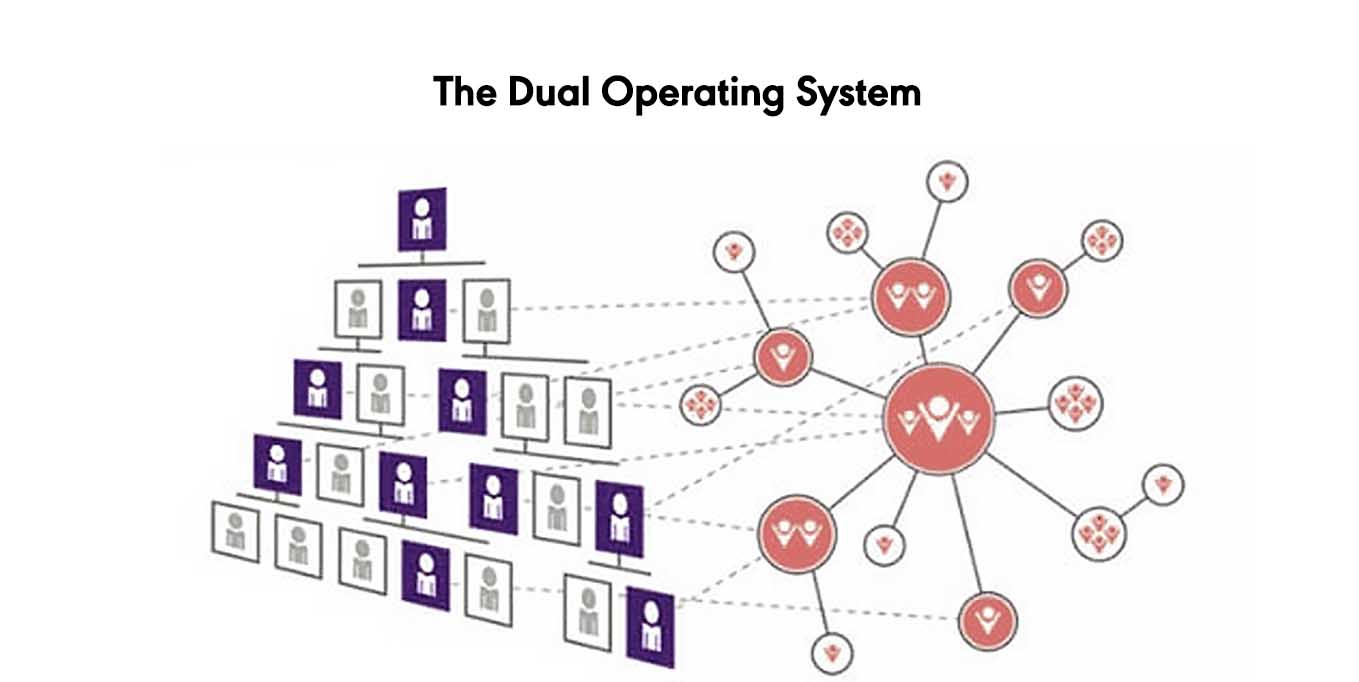
Design Team Areas of Focus
- Reducing or Eliminating Fines and Fees Across the District: This team is committed to addressing the financial burdens that can disproportionately affect families within the D11 district. By empathizing with the lived experiences of community members, this team is working to develop solutions that promote equity and accessibility for all.
- Improving New Teacher Support: This team is dedicated to providing educators new to teaching and/or to D11 the very best ongoing professional learning, coaching and mentoring experiences so that D11 may grow and retain its team.
- Designing New Middle School Identities: Middle school is a critical transitional period for students, and this team is focused on reimagining middle school experiences in D11 to include unique school identities and provide continuity of experiences aligned to student and family interests.
- Strengthening Community Engagement: Building strong partnerships with families and the community is essential for the success of the D11 district. This team is committed to fostering meaningful connections and collaboration with families and the community. By embracing ambiguity and exploring creative approaches to engagement, they’re working to build trust and mutual understanding.
- Centering Student Voice: Students are at the center of everything D11 does, and this team is dedicated to elevating student voices and acting on their ideas. By empowering students to actively participate in decision-making processes and advocating for their needs, they’re working to create school environments that are truly learner-centered.
Shape the Path
One of the crucial tenants D11 and LCC have embraced is the importance of “executive sponsorship” and an inseparable partnership between the hierarchy and the network (Kotter, 2014a). As design teams explore novel solutions to complex problems, they may encounter obstacles that require support and approval from those with the positional authority to make changes in the system.
When teams devise solutions that require substantial systemic changes, having the “blessing” of executive cabinet members becomes essential to remove roadblocks and grant necessary permissions, and “clearly signal that the network is not in any way a rogue operation” (Kotter, 2014b). Without this support, teams may find themselves spinning their wheels, unable to implement their ideas effectively and quickly become disillusioned. By removing obstacles and creating effective and timely feedback loops for executive sponsorship, D11 empowers its design teams to navigate challenges more effectively and drive impactful change within the organization.
Get Proximate
As the refrain goes, “those closest to the problem are closest to the solution.” Each design team is composed of a cross-functional team of individuals who consult with and lean on those who are proximate to the challenges being addressed. By leveraging the expertise and insights of a diverse team and drawing on the experience of those closest to the challenge, D11 ensures that the solutions are grounded in real-world understanding. Moreover, teams are committed to staying connected to the realities of their respective contexts through ongoing empathy work. This involves:
- Actively engaging with educational partners
- Listening to their experiences, and
- Empathizing with their needs and perspectives.
One emerging design team, composed primarily of high school students, will design solutions to challenges that directly impact their classroom and school experiences. Through this continuous process of clarification, ideation, and iteration, teams surface innovative ideas and approaches informed by the lived experiences of those directly impacted by the challenges they seek to address.
Build Internal Capacity
Kotter wisely writes that this work, “…must be done with insiders. Two hundred consultants, no matter how smart or dynamic, cannot do the job” (Kotter, 2014a, p. 23). While at LCC we consider ourselves both smart and dynamic, our primary goal is to partner with the D11 design team members to develop their design thinking mindsets and ultimately build their capacity to facilitate the work without us. Through this process, D11 has made the powerful decision to invite many people to drive important change instead of isolating the work to the “usual few appointees” (Kotter, 2014b). Design team members are enthusiastically embracing new mindsets, including navigating ambiguity and leading with empathy.
What’s Next:
D11 is continuing to launch new design teams as the work progresses. We have an exciting cue of pressing challenges that will go into the Lab starting in August.
Stay tuned for more updates on D11’s progress and the impact of these efforts within the D11 School District!
References
Kotter, J. P. (2012, November). Accelerate! Harvard Business Review, 90(11), 44-58. https://hbr.org/2012/11/accelerate
Kotter, J. P. (2014a). Accelerate: Building strategic agility for a faster-moving world. Harvard Business Review Press.
Kotter, J. P. (2014b, May 30). The value of the dual operating system. HR Magazine. https://www.hrmagazine.co.uk/content/features/the-value-of-the-dual-operating-system/
